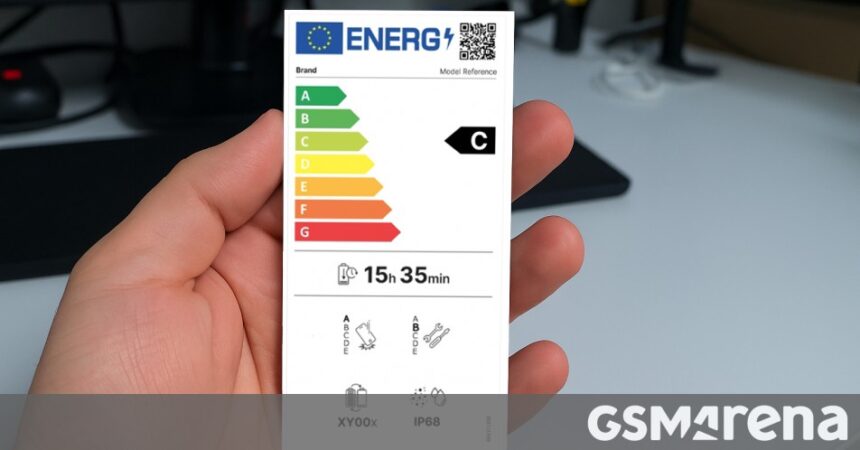The European Union Tech is forcing companies to be more transparent with customers – and the latest requirement is a welcome step in that direction.
From June 20, 2025, all smartphones and tablets sold in the EU will feature a new label within the B Battery cense, which shows battery life and efficiency. This Energy sticker is an update for Europeans already familiar with household appliances, which customers are now ready to configure with the type of information they expect from their electronic devices.

Which products come under new requirements?
This regulation applies with cordless phones (used for landlines), cellular or satellite networks with smartphones, internet or third-party applications without feature phones and 7 to 17.4 inch screens. The only devices in this category that are placed in the market from June 20, 2025.
Flexible major display devices that can be partly or completely unholy, this is exemption from the requirement. Phone and tablets that are in the EU market before June 20 have also been excluded.
What are the specific requirements?
All of the above -mentioned devices must complete the five key echodizine criteria:
- Durability: Devices should be resistant to accidental drops and protected against dust and water.
- Life expectancy: Batteries must bear at least 800 full charge and discharge cycles while maintaining at least 80% of their original capacity.
- Repair: Manufacturers must make crucial spare parts available in 5 to 10 working days, and continue to offer them for 7 years after selling the product in the EU.
- SPON ATWARE OFFERS: The devices must receive the operating petting system upgrades for at least 5 years from the deadline of sale.
- Repair receipt: Professional repairers must have non-incurring access cess of any required Software Ftware or Fermware.
How does the sticker look like?
The European Product Registry for the EPRL sticker (EPRL) sticker, commonly referred to as an energy label, will display seven key pieces of information. We have already seen a sample sticker on a phone made for the European market, confirming that the system is really rolling.

Who makes sure this data is accurate?
All suppliers – manufacturers, importers or authorized representatives – must enroll their product models through the European Commission -run EPRell platform, because of operating in the EU/EEA market.
While manufacturers are responsible for providing accurate data, the Commission will test information related to Ingres Protection, Repairability and Battery performance.

A real life sticker; Device information is hidden by us
We spoke to representatives of the European Commission who shared that their vision for device testing is closely organized by GSMere’s dot com for 15 years.
At the end of 2023, we introduced an update set of tests and began collaborating with the French Auto Tomation Company Smartwist. The same company now offers test solutions to manufacturers, which strongly indicate that the method we have helped to develop will empower millions of Europe to make better knowledgeable purchases decisions.
What does this mean for the final customer?
The Ecodizine Label is part of the comprehensive EU campaign to improve EURGY’s efficiency by 2030. This initiative expects the average € 150 of each home, reducing the Million by 46 million tonnes and at the top of the savings already received by existing ecodusine measures.

While these rules are officially applicable to the EU, their influence can go beyond 27 member countries. We are already seeing that smartphone manufacturers globally expand the Software Fatware update support, while devices are becoming more durable and easier to repair, benefiting customers everywhere.
In the future, we can streamline manufacturers and choose to meet the EU requirements globally instead of developing separate versions for different markets.






